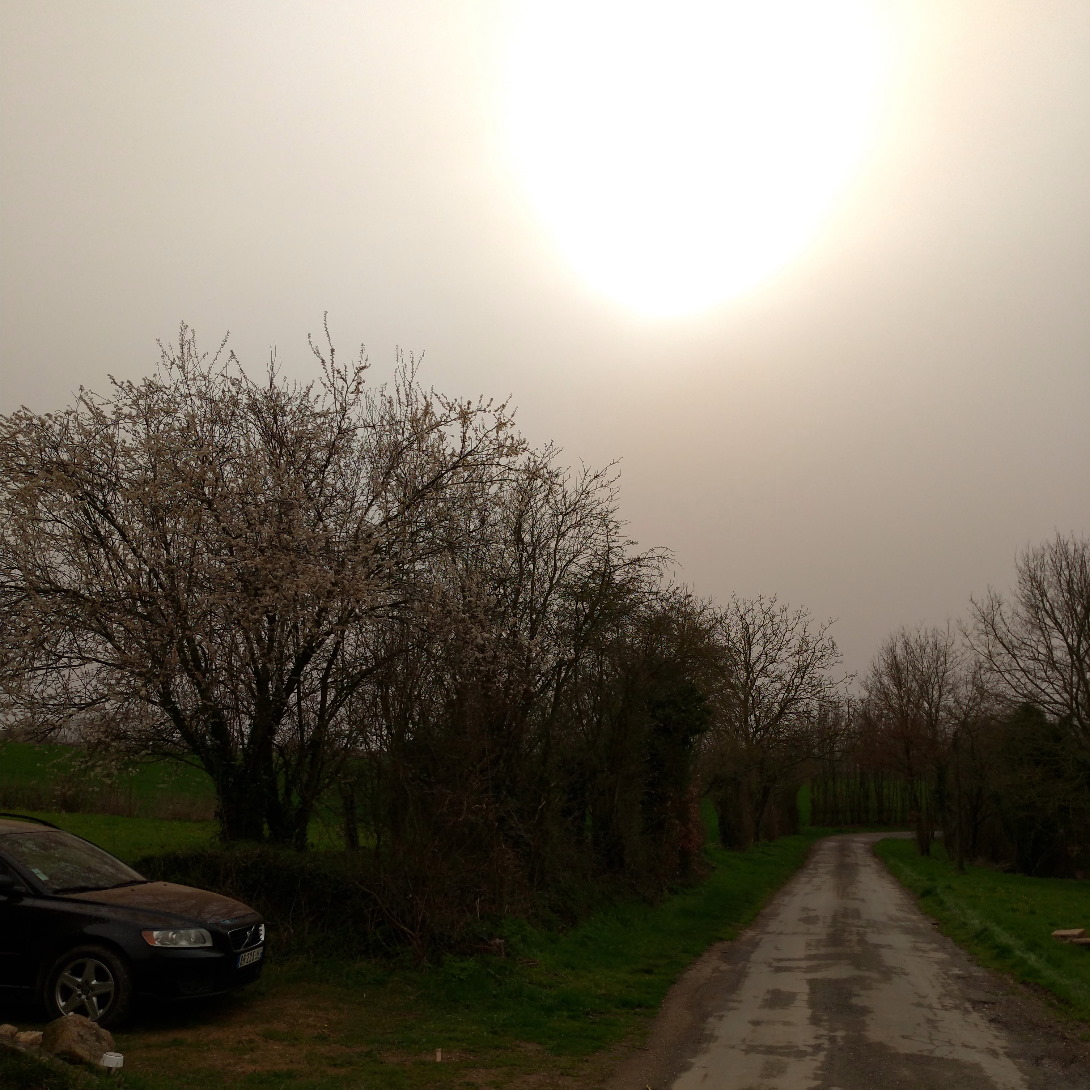
When the Vendée looks like Mars
What’s going on, Vendée? On the morning of March 15th, 2022, we awoke to cloudy skies exuding a hue of orange, as if we had suddenly landed in a bizarre Martian-colored landscape.
The haze in the air and the fine reddish dust coating everything here today is Saharan Dust. It comes from the Sahara Desert, and consists of mineral dust produced by wind-driven erosion. The dust is actually vital for marine and land-based life as it is rich in micronutrient iron, which is important for marine bacteria and phytoplankton. In the Amazon Basin, most of the phosphorus comes from aeolian (wind) dust.
According to NASA’s website, “Normally, hundreds of millions of tons of dust are picked up from the deserts of Africa and blown across the Atlantic Ocean each year.” These dust storms can fertilize soils in the Amazon, degrade air quality, impact hurricane development, and even shape Caribbean beaches.
The Saharan Dust is carried around the world at all times of the year, but in the Mediterranean and Southern Europe the peak output occurs in the spring and fall. The dust is carried by the Sirocco winds, originating in the Sahara and extending to Southern Europe most frequently in November and March. If rains do not cleanse the dust from the sky over the Mediterranean, the dust can reach much further north, as we see here in the Vendée today.
Although the Sahara dust contains vital nutrients, it is also highly irritating to mucous membranes, eyes, lungs. Bacteria can easily travel around the world. It is absolutely terrible for our health (and that of our animals). Lung infections, conjunctivitis, asthma, etc. are common. Some areas suffer this natural pollution for weeks at a time. Read more about the impact on our health here.
The impact on the environment is actually quite severe. A 2019 study entitled, “Saharan dust events in the European Alps: role in snowmelt and geochemical characterization” published in The Cryosphere, concluded that Saharan dust reduces the duration of snow cover in Europe significantly. In a process called the snow-albedo feedback, the Sahara dust darkens the snow making it less reflective, with increased snowmelt over time as a result.
It certainly doesn't pay to wash your car at this time of year, either!
If you have taken pictures of the phenomenon, please don't hesitate to share them in our Facebook group.
Share this Post



